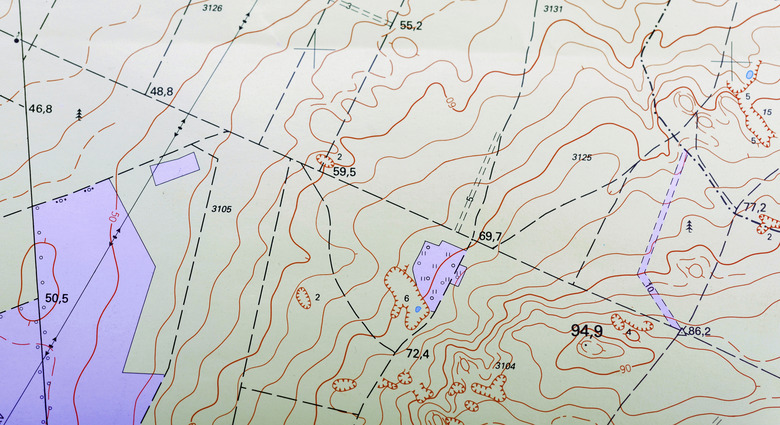How To Read Topographic Maps
A topographic map is a three-dimensional depiction (but usually in a two-dimensional presentation) of the contours and elevations of a region, such as mountains, hills, valleys and rivers. Topographic maps are typically used by the military, architects, mining companies and even hikers. To read a topographic map, you need to understand the representations of the many circles and lines scrawled all over the terrain.
Step 1
Note the contour lines on the map. These lines connect points of equal elevation. Some lines will have the recorded elevation written in the line. The map's legend will indicate the elevation distances between the contour lines. For example, if the elevation distance is 100 feet, then the contour line below a recorded line of 1,500 feet will be 1,400 feet. The spacing of these lines also designates the slope: close lines mean steep slope, lines farther apart mean a gradual slope and merging lines indicates a cliff.
Step 2
Examine the loops formed by the contour lines. Inside the loops typically indicates uphill and outside indicates downhill. If inside the loop indicates a depression rather than an incline, some maps will indicate this with short lines radiating downward from inside the loop.
Step 3
Note the "V" structures on the map. These indicate stream valleys, with the point of the "V" acting as the point of drainage.
Step 4
Check for base elevation in the map legend. Topographic maps of mountain ranges may have a base elevation of 8,000 feet, so a topographic reading of 800 means the point of interest is at 8,800 feet.
Step 5
Check the water tables in the map legend. All elevations are recorded above sea level, so any maps of regions below sea level, such as a topographic map of New Orleans, could be recorded as negative numbers.
TL;DR (Too Long; Didn't Read)
The map's legend also designates the color schemes used indicate other geographical features of the region, such as forests and bodies of water.
Warning
Please note that topographic maps rarely depict man-made structures, such as bridges and buildings.
References
Cite This Article
MLA
Honea, Keri. "How To Read Topographic Maps" sciencing.com, https://www.sciencing.com/read-topographic-maps-4577366/. 24 April 2017.
APA
Honea, Keri. (2017, April 24). How To Read Topographic Maps. sciencing.com. Retrieved from https://www.sciencing.com/read-topographic-maps-4577366/
Chicago
Honea, Keri. How To Read Topographic Maps last modified March 24, 2022. https://www.sciencing.com/read-topographic-maps-4577366/
